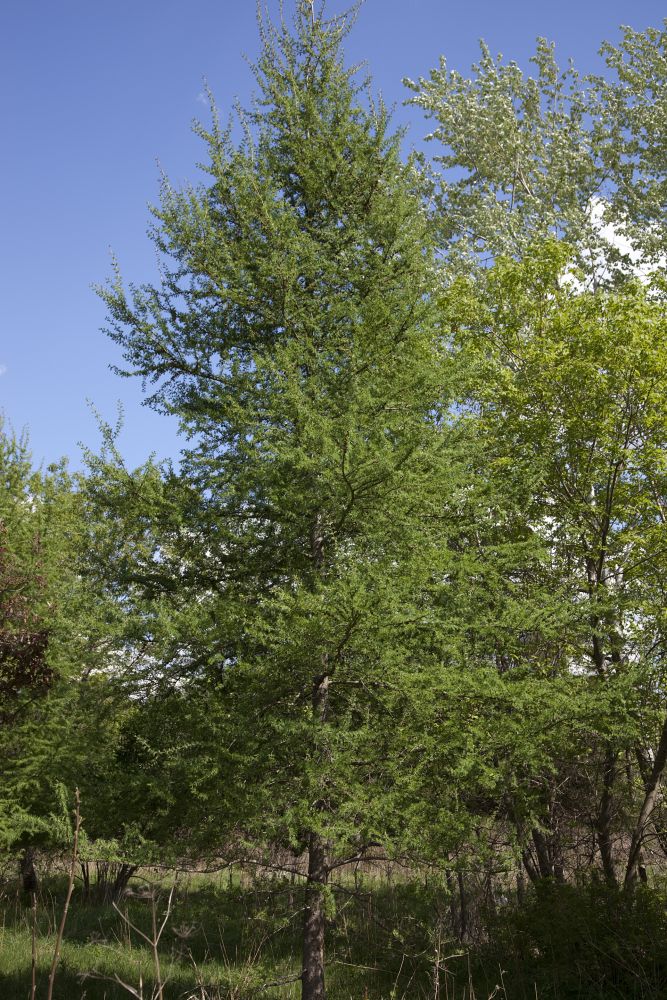Right now you might be wondering, isn’t the tamarack an evergreen? Why is it changing colour in the fall? While tamarack is a coniferous tree (cone-bearing), it’s also part of the only genus (Larix) that has needles AND is deciduous (drops leaves in the fall). While I’d like to explain the science of this from an ecological point of view, I’d just be making it up. The truth is no one (at least to the best of my knowledge) seems to know! Instead, I can paraphrase a favourite story of mine on how this came to be:

In late fall many years ago, a huge winter storm was rolling in while a flock of migrating birds were flying south for the season. They needed to take shelter so they asked the tamarack if they could roost in its branches while the storm hit. The tamarack was the most majestic tree in the forest and spent the majority of its time admiring its own reflection in a nearby lake (you know the type I’m talking about) – so it said no to the tired flock!

The tamarack said it had already begun to settle in for its winter sleep and that the birds would be too noisy to hang out, so the flock was forced to fly on and find another shelter. But Mother Nature had witnessed the entire exchange, and because the tamarack would not give shelter to those in need, she forced it to lose its winter coat so that it would learn how hard winters truly are.
Thankfully for us, Mother Nature also made sure tamaracks would be a very useful timber species. Their wood is used to make runners for dogsleds as well as old-school snowshoes. They are made into pulp for our paper, used in framing houses, and even railroad ties. Needles of this species are often made into a tea that is used as a diuretic, to soothe sore throats, and even chewed to aid digestion.

And have you ever touched a tamarack? They have beautiful foliage in the summer as well, with soft, thick clusters of needles ranging from 15-25. In the spring, when they first break bud, the needles are a bright lime green, which stands out in a typical forest setting. Their cones persist through winter and are very tiny – even smaller than their closely related friend the European larch (Larix decidua).

Tamarack is has a narrow pyramidal form and in an urban setting they are very tolerant of a wide variety of soils and moisture levels, but they don’t love shade. Also known as Eastern larch, they can be found in every Canadian province and territory, as far north as the tree line and south into the northern United States. It is also the territorial tree of the Northwest Territories.
LEAF offers tamarack as part of our Backyard Tree Planting Program, so if you’re looking for a soft-needled, show-stopping conifer with a mysterious side, contact us today to book a consultation with one of our arborists!
Join me next month when I explore the life history of the Black Maple – a lesser known species that flies under most radar!
The Backyard Tree Planting Program is supported by Ontario Power Generation, York Region, Ontario Trillium Foundation, The City of Markham and Toronto Hydro.
